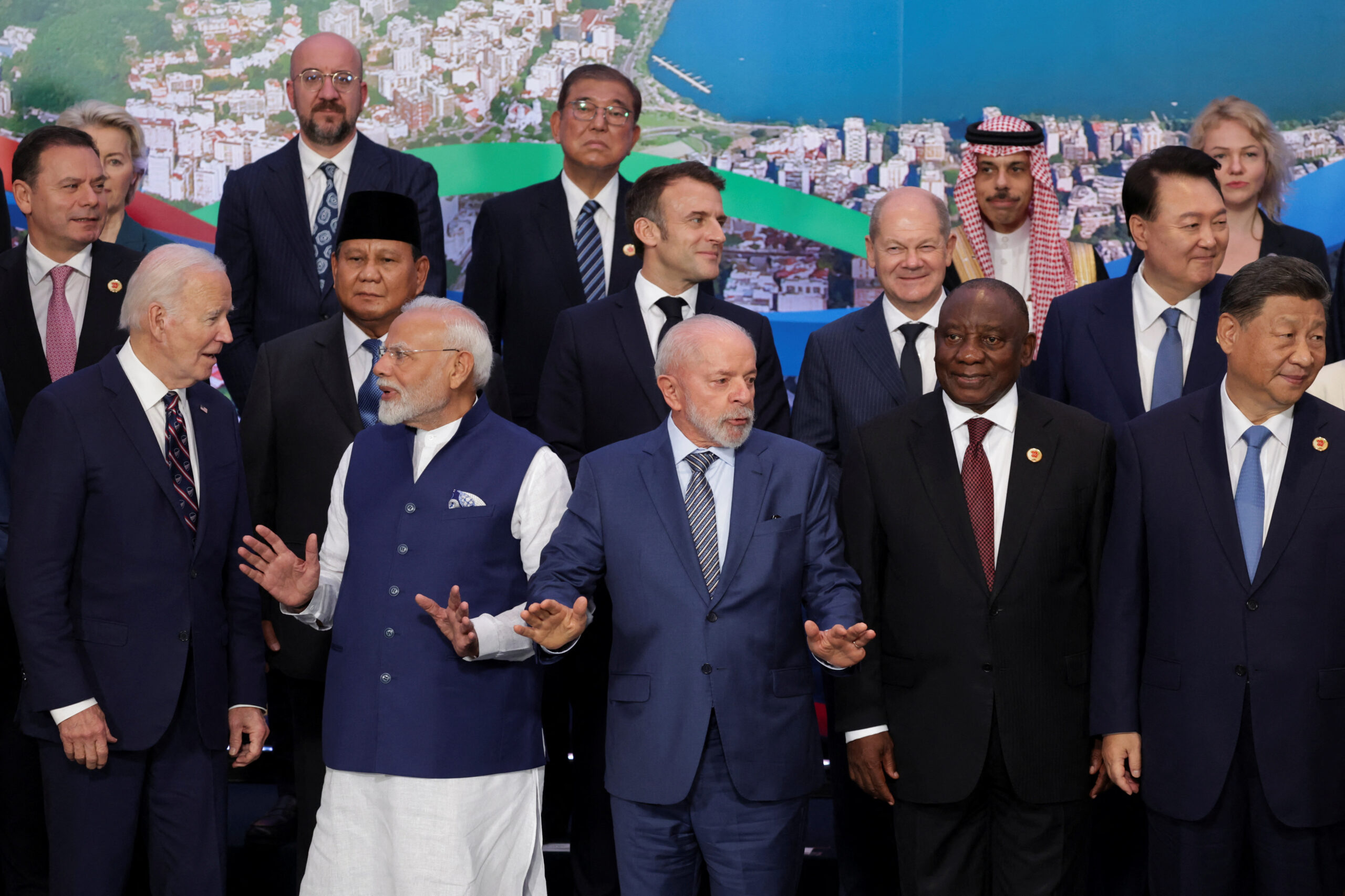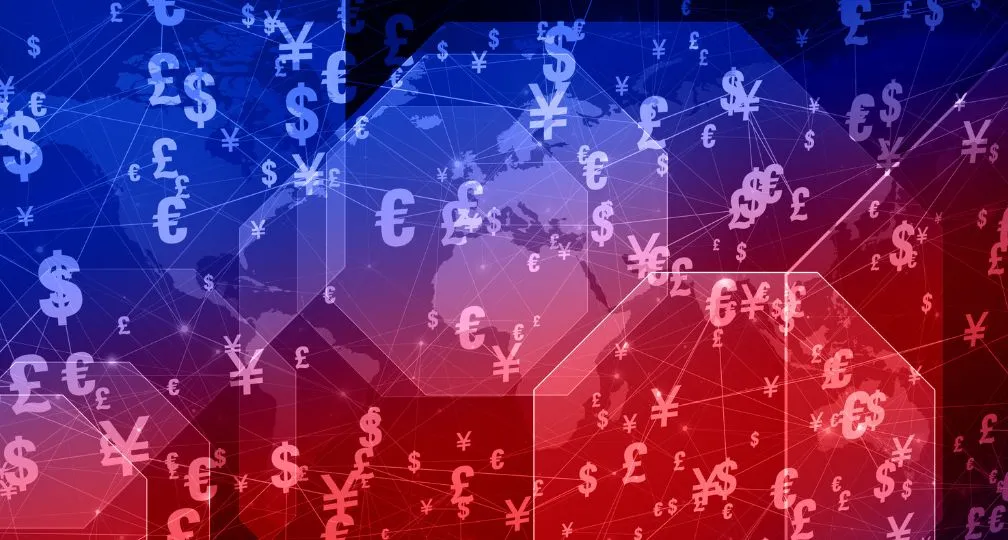IOG Economic Intelligence Report (Vol. 3 No. 15)

The latest regulatory developments on economic security & geoeconomics
By Paul Nadeau, Visiting Research Fellow, Institute of Geoeconomics (IOG)
Biden Steps Aside: U.S. President Joe Biden announced he would withdraw from the presidential campaign and endorsed Vice President Kamala Harris for the Democratic presidential nomination. Regarding implications for trade and economic strategy, she did not sit on any Senate committees with jurisdiction over trade issues during her time as a senator and has not worked on international trade issues in the past, but expressed opposition to Trump’s tariffs on China in 2019 and generally hewed to the basic Democratic party position. She and President Biden have shared several staff and advisors who focus on trade and economics, indicating a basic continuity between the two candidates, though she appears to have a particular focus on climate policies, and the lack of climate change provisions in the U.S.-Mexico-Canada Agreement (USMCA) led to become one of ten senators to vote against the agreement.
Republicans Announce their Trade Platform: The Republican party platform, released in advance of its convention July 15-18 and its first since 2016, included several significant proposals for U.S. trade policy. It includes Donald Trump’s proposal for a 10 percent across-the-board tariff on all imports into the United States, revocation of China’s most favored nation trade status, phasing out imports of essential goods from China, banning companies that outsource jobs from selling goods to the federal government, preventing “China” from buying U.S. real estate and industries, and more generally advocates against “a blind faith in the siren song of globalism”.
CCP Announces Economic Strategy: The Chinese Communist Party’s Central Committee released a 60-page report on its economic strategy and proposed no significant changes to China’s economic structure or broad strategy. The report instead reasserted the current approach focused on technology and R&D into strategic industries like “new generation information technology, artificial intelligence, aviation and aerospace, new energy, new materials, high-end equipment, biomedicine, and quantum technology”, indicating a continuation of state-led economic growth and innovation.
United States Targets Steel Transhipments: The Biden administration announced the imposition of Section 232 tariffs of 25 percent targeting steel or derivative steel products that are listed as products of Canada or Mexico but melted and poured in counties other than Canada, Mexico, or the United States. The tariffs are designed to prevent the transshipment of such steel products from third countries, like China, that are already the targets of Section 232 tariffs, Section 301 tariffs, and other similar barriers.
Mexico Seeks Protection from Safeguards: Mexico has asked the United States exempt its exports of bifacial solar panels from “safeguard” import restrictions that were initially imposed under the Trump administration in 2018 and extended by the Biden administration in 2022 but directed negotiators to reach side deals with Canada and Mexico. In May, the Biden administration amended the restrictions under Section 201 of the 1974 Trade Act to remove an exclusion for bifacial panels, noting that “imports of bifacial panels have surged, now making up nearly all U.S. solar panel imports and undercutting the effectiveness of the Section 201 safeguard.” A spokesperson for the Office of the U.S. Trade Representative told Politico’s “Morning Trade” newsletter that they are “reviewing the letter and will respond in due course.”
Nippon Steel Turns to Former Secretary of State: Nippon Steel has hired former Secretary of State Mike Pompeo as an advisor to help the company complete its purchase of U.S. Steel for $14.1 billion. In a statement provided by Nippon Steel, Pompeo said that the United States should expand its manufacturing base by partnering with allies. The proposed acquisition is currently undergoing a security review by the Committee on Foreign Investment in the United States (CFIUS), while President Joe Biden and Republican presidential candidate Donald Trump have both expressed opposition to the deal.
Analysis: How to Confront Economic Disruptions from China?
One of the most important things to understand about China’s economy is that it’s big. It’s a large country with diverse economic endowments and its population is the world’s largest with one of the most world’s most highly skilled across a variety of sectors and activities. Its share of global GDP is 18 percent, larger than even the United States and its 16 percent share. If China, a country with a population three times that of the United States, were to achieve a GDP per capita equal to that of the United States, China’s economy would need to be three times larger than the U.S. economy, currently the world’s largest.
This scale can lead to distortions in the global economy simply because the scale of its economic activity magnifies its centralized decision making. When China responded to the 2009 financial crisis with a $625 billion stimulus package, the ensuing demand for steel for construction projects led to a supply glut from all the steel that was produced, driving down prices worldwide and leading China to look somewhere, anywhere to sell its excess steel. China’s steel workers couldn’t be simply laid off because of the social upheaval that would follow, so the unrest itself was exported and steelworkers in Germany and the United States began to protest their country’s cut-price steel imports from China. In effect, bad habits and poor management in the political economy of China, rather than malicious intent, led to a crisis in the global steel industry. The current concerns with China’s political economy now relate to its overproduction of solar panels and EVs which are flooding global markets and pushing smaller players out of the market before they even have a chance to emerge.
This scale can also be used menacingly and certainly has been, targeting France for its support for an investigation into the possibility of European Union tariffs against electric vehicles (EVs) from China, against Australia for its support for an investigation into the origins of the COVID-19 virus, against South Korea for its deployment of missile defense systems to counter threats from North Korea, against Lithuania for opening a liaison office with Taiwan, and the possibility for future coercion is always present. Yang Jiechi’s infamous line, “China is a big country and other countries are small countries, and that’s just a fact” seemed to simply say the quiet part out loud, underlining China’s willingness to coerce its neighbors to achieve its goals.
The twin concerns of the size of China’s economy and its ability to use that size and unique position has led to understandable concerns about how economies, particularly the smaller economies of East Asia and Southeast Asia, can counter the effects of China’s economic policies. This isn’t straightforward. To this point, many efforts to address this situation have been unilateral, with the EU, Indonesia, and the United States imposing their own tariffs on overproduced goods like EVs from China. Diversification by finding more sources for important goods and seeking new markets can help blunt the possible effects of economic harm, along with “friendshoring” to improve supply chain security.
Leveraging collective action can also be an important step. At its 2023 summit in Hiroshima, the G7 announced the “Coordination Platform on Economic Coercion”, an information-sharing and early warning platform to highlight instances of economic coercion. But for other actors, like ASEAN who may be in the immediate crosshairs of this issue but lack the G7’s economic weight, addressing economic distortions is more challenging. ASEAN collectively counts as the world’s fifth largest economy, but their $4 trillion GDP is still dwarfed by China’s $18.5 trillion. Adding Japan to the cause with its $4 trillion GDP, the world’s fourth-largest and a partner of ASEAN in many respects, still doesn’t reach half of China’s GDP. While the addition of additional economies can bring further economic force to bear, diversifying potential economic coalitions in this way makes them increasingly susceptible to differences of opinion which can be exploited by China to fray the effort. The range of opinions towards China and its economy in established groups like ASEAN and the EU show the challenges and limits of collective action.
Of course, an obvious way to push back against the effects of economic dislocation or coercion from the world’s second-largest economy is to seek the help of the largest, the United States. In the past, the United States has stepped in to help replace China’s market for goods from the targeted country or help the country find new markets, used diplomatic efforts to elevate the issue in global forums, and more. The United States has particularly focused on developing a “toolkit” to help countries respond to Chinese coercion, a project that has attracted considerable interest from a range of countries.
These measures can help respond to coercion, but none of them really address the fundamental issues of overcapacity and they may even backfire in some situations. The best example may be China’s overcapacity in EV production – unilateral tariffs may help keep EVs out of the country that’s placed the tariffs, but when the facilities in China are already manufacturing EVs and the vehicles are already waiting to be sold, those EVs need to go somewhere, and it’s countries without the capacity or scale to impose tariffs of their own that will face the glut first. It’s an issue that’s more widespread than coercion but so far has only received a fraction of the attention.
This may be where the declining capacity of the World Trade Organization to address issues exactly like this may be most acute. While it’s true that the WTO was never designed to accommodate a large state-directed economy like China’s, the emerging framework, relying on unilateral or minilateral measures, runs the risk of dumping the problem on countries even less prepared to accommodate those pressures. The multilateral order was designed to address collective action problems exactly like this – whatever is supposed to replace that order needs to address the issue as well.


Visiting Research Fellow
Paul Nadeau is an adjunct assistant professor at Temple University's Japan campus, co-founder & editor of Tokyo Review, and an adjunct fellow with the Scholl Chair in International Business at the Center for Strategic and International Studies (CSIS). He was previously a private secretary with the Japanese Diet and as a member of the foreign affairs and trade staff of Senator Olympia Snowe. He holds a B.A. from the George Washington University, an M.A. in law and diplomacy from the Fletcher School at Tufts University, and a PhD from the University of Tokyo's Graduate School of Public Policy. His research focuses on the intersection of domestic and international politics, with specific focuses on political partisanship and international trade policy. His commentary has appeared on BBC News, New York Times, Nikkei Asian Review, Japan Times, and more.
View Profile The Lessons of the Nippon Steel Saga2025.07.08
The Lessons of the Nippon Steel Saga2025.07.08 From dollar hegemony to currency multipolarity?2025.06.25
From dollar hegemony to currency multipolarity?2025.06.25 The Big Continuity in Trump’s International Economic Policy2025.06.11
The Big Continuity in Trump’s International Economic Policy2025.06.11 India’s Strategic Autonomy in a Trumpian World2025.07.11
India’s Strategic Autonomy in a Trumpian World2025.07.11 The Tyranny of Geography: Okinawa in the era of great power competition2024.02.09
The Tyranny of Geography: Okinawa in the era of great power competition2024.02.09













